| Great War at Sea
The Second Edition
By Mike Bennighof, Ph.D.
September 2022
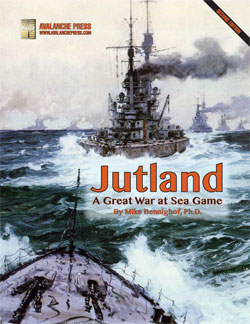 Great War at Sea made its debut in 1996, with a relatively short rulebook (as wargames go) of just 20 pages. We tinkered with it a little soon after its first appearance, and changed its layout at one point thanks to a file-format problem, but we sold games with that standard rules set for 26 years, until we took all of the series games out of print earlier this year (2022) pending issuance of a new rulebook. Great War at Sea made its debut in 1996, with a relatively short rulebook (as wargames go) of just 20 pages. We tinkered with it a little soon after its first appearance, and changed its layout at one point thanks to a file-format problem, but we sold games with that standard rules set for 26 years, until we took all of the series games out of print earlier this year (2022) pending issuance of a new rulebook.
And now it’s time for the new edition!
Series developers Robin Rathbun and Jim Stear have overseen a complete overhaul of the venerable series rules. In terms of game-play and flow, the Second Edition (the new layout of the year 2000 doesn’t count) retains all the key concepts of the First. Play takes place at two levels, with fleets seeking each other on a common Operational Map, and play moving to the Naval Tactical Map where ships fight it out with guns and torpedoes.
Language and organization have changed, to bring Great War at Sea as close as possible into line with Second World War at Sea’s Second Edition (much as we did with Infantry Attacks and Panzer Grenadier). Where concepts are the same, they’re described the same way, with the same procedures. The idea is to make it easy for players to transition from one game series to the other, without running into things that seem to be the same, but actually aren’t. Now they actually are the same.
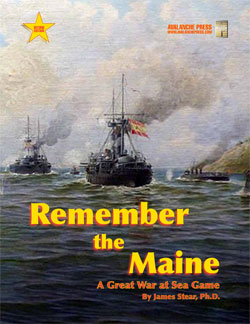 Over the years, the series rules had expanded greatly, in the form of special rules included in the scenario books of various games or in expansion books. Those are now an integral part of the standard series rules: rules for aircraft, airships, submarines, motor torpedo boats, mines, amphibious operations and special missions. Over the years, the series rules had expanded greatly, in the form of special rules included in the scenario books of various games or in expansion books. Those are now an integral part of the standard series rules: rules for aircraft, airships, submarines, motor torpedo boats, mines, amphibious operations and special missions.
On the Operational Map, operational speeds and fuel consumption now follow the same rules as those from the most recent Great War at Sea expansion books. The names of weather conditions have been changed to match those in Second World War at Sea; the results remain mostly the same, except that Gales are not quite as bad for aircraft.
Search rules for off-map raiders are updated to the standards of more recent games and expansions. And the supply mission is now an integral part of the standard rules. Plus, there are updated rules for hunting enemy merchant ships. The coastal defense and blockade missions, which only ever really applied to the pre-dreadnought-era games, now just appear in the special rules for those games or expansions.
The First Edition had two forms of tactical combat resolution, basic combat in which you lined up the ships and blazed away at each other (a holdover from the original game design that spawned Great War at Sea) and advanced combat which took place on the Tactical Map. The latter is now the standard combat system, with the simple one moved to the optional rules (no one used it anyway). Pulling out the basic rules also allows the major rules section numbers to align between Great War at Sea and Second World War at Sea.
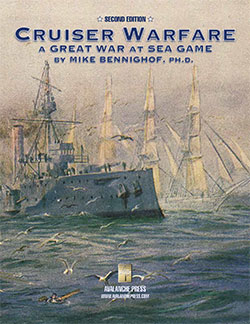 The now-standard tactical combat system has changed considerably, to bring it closer in line with Second World War at Sea and clean up a few inconsistencies. When operational scenarios lead to battle, the fleets enter the board from the edge, just like Second World War at Sea. And now you get illustrations of how to do that! The now-standard tactical combat system has changed considerably, to bring it closer in line with Second World War at Sea and clean up a few inconsistencies. When operational scenarios lead to battle, the fleets enter the board from the edge, just like Second World War at Sea. And now you get illustrations of how to do that!
Once the fighting commences, the Gunnery, Torpedo and Special Damage tables are all aligned with those from Second World War at Sea. That doesn’t make much difference for Gunnery and Special Damage, since they weren’t all that different to begin with. Torpedoes are now much deadlier, with catastrophic damage no longer optional, which makes results like those suffered by the pre-dreadnoughts Pommern, Cornwallis or Danton, or the dreadnought Szent István (all, among others, sunk by a single torpedo hit), now more than infinitesimally possible.
There’s also a third tactical system, this one presented in the optional rules and based on the Advanced Tactical Rules from Second World War at Sea’s optional rules. These have facing and formation rules, but are actually playable by humans.
The air operations rules have added a modified version of Second World War at Sea’s salvage procedure, and while the airship rules have also been overhauled with the modifications from more recent games and expansions, they’re still fully compatible with the Advanced Zeppelin Leader rules from the Zeppelins book. Submarines have gained the flotilla rules introduced in more recent expansions, and mines now interact with both submarines and motor torpedo boats.
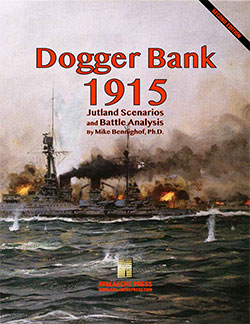 All of that comes, of course, with brand-new full-color play aids with the new tables (gunnery, torpedo, special damage and such). It’s packaged the same way we handled the previous edition, with a standard package with the rulebook and the Naval Tactical Map, tables cards and fleet organization cards all tucked inside it, and then included with every game. It’s one rulebook to rule them all; once you know how to play one game in the series, you know how to play them all. All of that comes, of course, with brand-new full-color play aids with the new tables (gunnery, torpedo, special damage and such). It’s packaged the same way we handled the previous edition, with a standard package with the rulebook and the Naval Tactical Map, tables cards and fleet organization cards all tucked inside it, and then included with every game. It’s one rulebook to rule them all; once you know how to play one game in the series, you know how to play them all.
Second Edition Great War at Sea games also have their scenarios and special rules sections updated top reflect the new series rules. You could probably make the new rules work with the old games if you squinted really hard, but they’re not intended to be backward-compatible.
The new rules mark a new era for the game series that made Avalanche Press. We’re bringing back the best of our older Great War at Sea games (Jutland, Cruiser Warfare, Russo-Japanese War, Remember the Maine) upgraded to match the new rules, and every new game will carry the Second Edition rules as well. From the moment they’re released, every Great War at Sea game we ship will have the new rulebook and be designed for their use.
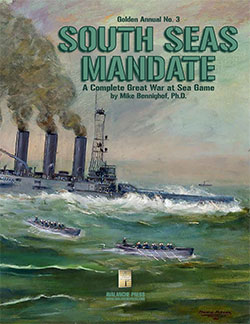 We’ve got some great plans for Great War at Sea; you can see some of them right here. This time around, it’s going to be even more fun than the first. We’ve got some great plans for Great War at Sea; you can see some of them right here. This time around, it’s going to be even more fun than the first.
Click here to join the Gold Club.
See your Gold Club Insider newsletter for ordering information.
Sign up for our newsletter right here. Your info will never be sold or transferred; we'll just use it to update you on new games and new offers.
Mike Bennighof is president of Avalanche Press and holds a doctorate in history from Emory University. A Fulbright Scholar and NASA Journalist in Space finalist, he has published a great many books, games and articles on historical subjects; people are saying that some of them are actually good.
He lives in Birmingham, Alabama with his wife and three children. He misses his Iron Dog, Leopold.
Want to keep Daily Content free of third-party ads? You can send us some love (and cash) through this link right here.
|
